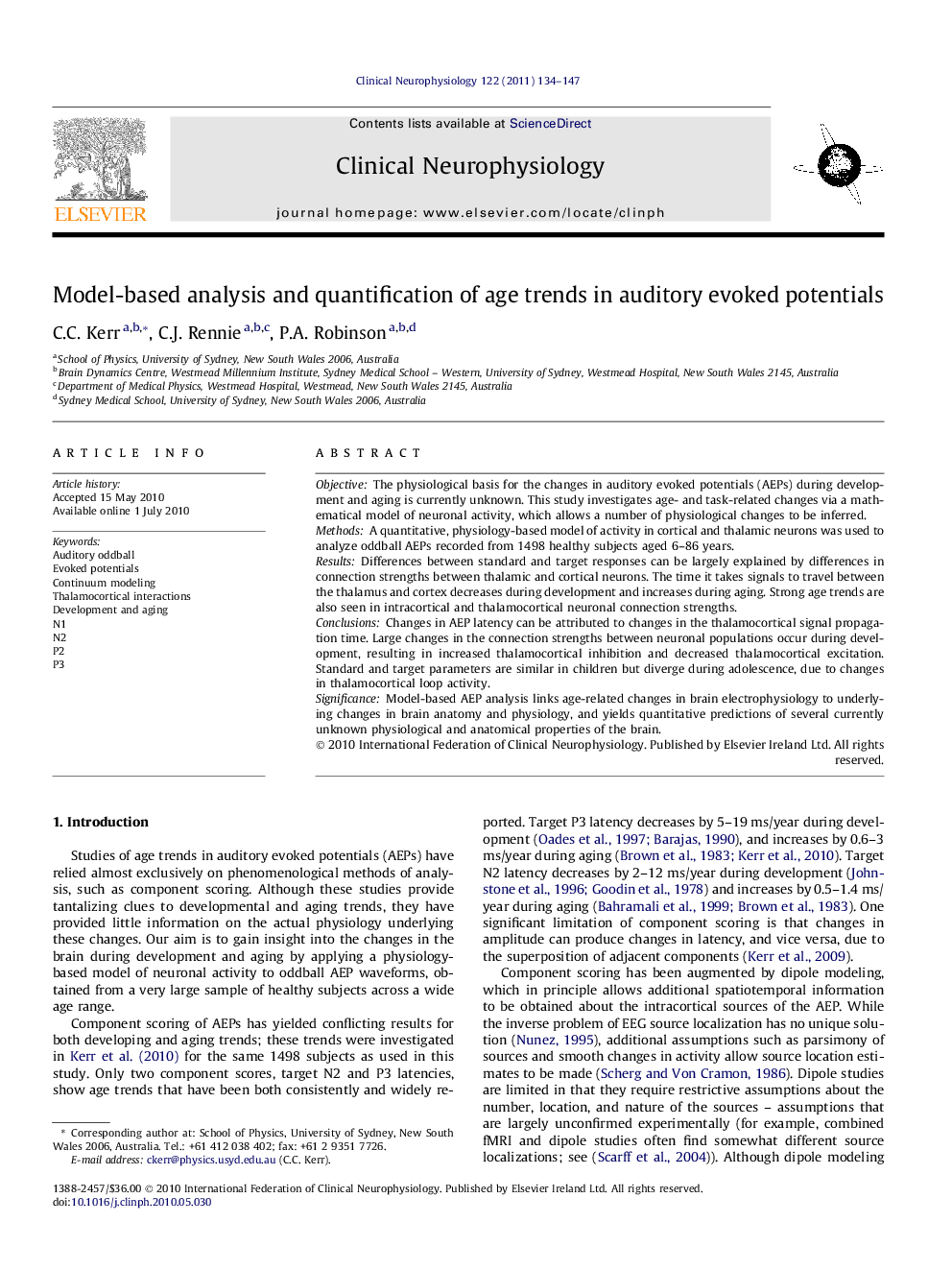| Article ID | Journal | Published Year | Pages | File Type |
|---|---|---|---|---|
| 3044254 | Clinical Neurophysiology | 2011 | 14 Pages |
ObjectiveThe physiological basis for the changes in auditory evoked potentials (AEPs) during development and aging is currently unknown. This study investigates age- and task-related changes via a mathematical model of neuronal activity, which allows a number of physiological changes to be inferred.MethodsA quantitative, physiology-based model of activity in cortical and thalamic neurons was used to analyze oddball AEPs recorded from 1498 healthy subjects aged 6–86 years.ResultsDifferences between standard and target responses can be largely explained by differences in connection strengths between thalamic and cortical neurons. The time it takes signals to travel between the thalamus and cortex decreases during development and increases during aging. Strong age trends are also seen in intracortical and thalamocortical neuronal connection strengths.ConclusionsChanges in AEP latency can be attributed to changes in the thalamocortical signal propagation time. Large changes in the connection strengths between neuronal populations occur during development, resulting in increased thalamocortical inhibition and decreased thalamocortical excitation. Standard and target parameters are similar in children but diverge during adolescence, due to changes in thalamocortical loop activity.SignificanceModel-based AEP analysis links age-related changes in brain electrophysiology to underlying changes in brain anatomy and physiology, and yields quantitative predictions of several currently unknown physiological and anatomical properties of the brain.
